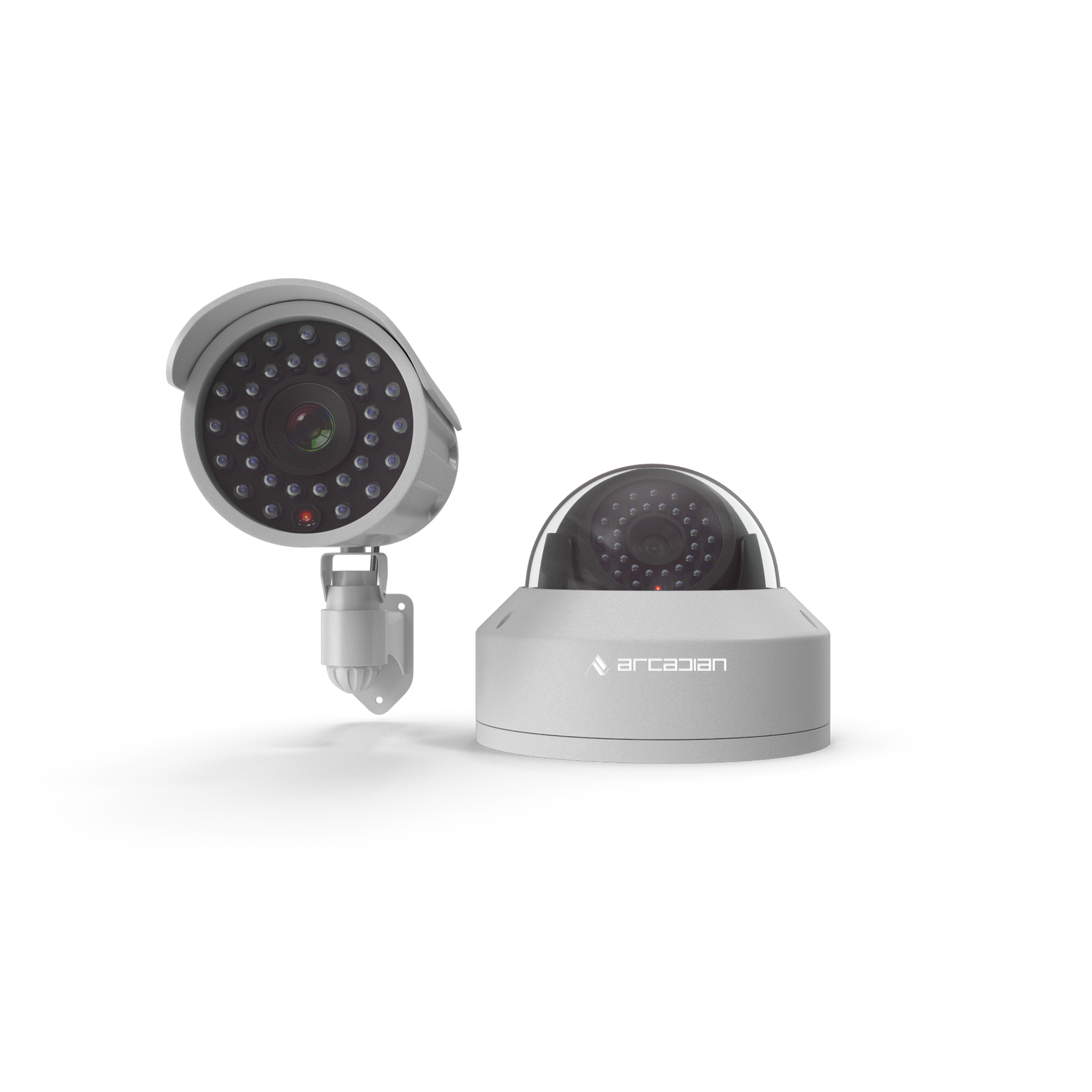When Viral AI Photo Trends Reveal Deeper Privacy Risks: What Surveillance Systems Must Learn
Viral AI photo trends seem harmless and fun—until the invisible risks emerge: identity theft, deepfakes, image profiling. Discover what surveillance systems must change to keep privacy intact.

- Introduction
- Quick Summary / Key Takeaways
- Background & Relevance
- Core Topic Exploration
- What Surveillance Systems Must Learn / Implement
- Comparison: ArcadianAI vs Traditional Systems
- Common Questions (FAQ)
- What Surveillance Systems Should Do: Concrete Steps & Roadmap
- Reverse Psychology Angle: What Not to Do (and Why It’s Risky)
- Case Study: “Nano Banana” Trend & Lessons
- Ethical, Legal & Social Implications
- How ArcadianAI + Ranger are Built to Address These Lessons
- Emerging & Future Risks: What To Watch
- Conclusion & Call to Action
- References
- Security Glossary (2025 Edition)
Introduction
In 2025, AI-powered photo edit trends are everywhere. From stylized avatars and “Barbie-ified” looks to retro-glam filters and the new “Nano Banana” AI saree trend by Google Gemini, more people than ever are swapping selfies for AI-generated spectacle. (Indiatimes)
But while these viral wonders delight social feeds, they carry hidden privacy risks. As ArcadianAI, we believe that surveillance systems—traditionally focused on security—need to treat these risks as real vulnerabilities. For the same technologies that enable these trends—facial recognition, biometric data, model inversion, image profiling—are also being used in surveillance.
If left unchecked, viral AI photo trends not only threaten individual privacy but weaken trust, expose systems to legal risk, and can become vectors for misuse. In this post, we’ll unpack the privacy issues behind these trends, show how they intersect with surveillance systems, and lay out what must change—including how ArcadianAI + Ranger is positioned to lead.
Quick Summary / Key Takeaways
-
Viral AI photo trends can leak biometric data and enable deepfake misuse.
-
Model inversion, image-profiling & reverse image search are rising threats.
-
Surveillance systems must adopt stricter data governance, transparency, and consent.
-
Ethical & regulatory compliance (e.g. GDPR, biometric laws) is non-negotiable.
-
ArcadianAI’s camera-agnostic cloud-native design + Ranger can help mitigate many risk vectors.
Background & Relevance
Why this matters now
-
The “Nano Banana” trend by Google Gemini has been used over 500 million times in just days, transforming user selfies into stylized retro portraits. While users enjoy the creative outputs, reports note “creepy” changes (imaginary freckles / moles, altered faces) and uncertainty over how biometric & facial data is stored, used, or potentially misused. (Indiatimes)
-
AI privacy incident counts jumped by ~56.4% year over year in one recent Stanford-based study (2024) for reported AI-related privacy incidents. (Kiteworks | Your Private Data Network)
-
Survey data shows that more security leaders now rank AI, LLMs, and privacy issues above even ransomware or malware as the top concern. (Arctic Wolf)
Why surveillance systems are especially exposed
-
Surveillance systems already process facial images, identity matches, and often operate continuously in public or semi-public spaces. Any erosion of trust or misuse of image data can lead not only legal consequences but loss of public trust.
-
Viral AI photo trends accelerate what might otherwise be “edge cases” into mass data collection, raising scale of biometric exposure.
Core Topic Exploration
1. Key Privacy Risks Emerging from Viral AI Photo Trends
| Risk | What it means | Examples / Cases |
|---|---|---|
| Model Inversion & Biometric Reconstruction | Even if you only share edited or stylized photos, adversaries can invert models to reconstruct raw biometric data or facial features. | A recent academic paper presents DiffUMI — a universal model inversion attack using diffusion models, which can reconstruct facial imagery from embeddings that were thought safe. (arXiv) |
| Image Profiling & Sensitive Attribute Inference | AI systems can infer not only identity, but private attributes (age, health, ethnicity, political leaning, etc.) from sets of images. | The “HolmesEye / PAPI” work shows vision-language models inferring sensitive or abstract attributes from personal image collections. (arXiv) |
| Hidden Metadata & EXIF / Debug Traces | Uploaded images often contain more than visible content: location, device info, timestamps, and internal prompt/debug data can leak. | Experts warn that viral style filters often leave metadata or debug traces in exported images. (Protectstar) |
| Deepfake & Misattribution Risks | Edited images may be misused as “proof” of something, or used in scams or fraud, or taught to AI models that generate disinformation. | Users have noticed unexpected “details” in Gemini edits — moles, facial features not in original photo. Also, viral trends can feed large-scale datasets for AI models. (The Times of India) |
| Reverse Search / Location Disclosure | Even when EXIF is removed, AI combined with reverse image lookup or reasoning can place a user’s location or context. | The new ChatGPT trends: uploading photos to ask “where was this taken” — models can infer landmarks, architecture etc. (TechRadar) |
| Unauthorized Biometric Data Usage | Data used for one purpose (fun edits) being reused for AI training or profiling without explicit consent. | Warnings from authorities in India re: Gemini: unclear policies on how images are stored/used. (The Times of India) |
2. How These Risks Mirror Threats in Surveillance Systems
Let’s map the overlap:
| Threat Vector in Viral Photo Trends | Equivalent or Risk in Surveillance Systems |
|---|---|
| Large scale collection of faces & images (even voluntarily) | Continuous video feeds in public spaces, facial recognition, mass gathering events. |
| Training data used without clear consent or ethical guardrails | Surveillance vendors / operators using large datasets, third-party vendors, lack of privacy review. |
| Hidden metadata, inference attacks (home, location) | Camera angle/location metadata; logs of motion; GPS/timestamp info; cross-referencing with other data sources (license plates, access control). |
| Deepfakes, misattribution | Risk of false positives in identity matching; defamation, wrongful arrests; trust erosion. |
| Reverse search / profiling from images | Data brokers, law enforcement, insurance or workplace surveillance inferring personal traits. |
3. Regulatory & Ethical Landscape
-
GDPR (EU), CCPA / CPRA (California), BIPA (Illinois) and a patchwork of international biometric laws consider biometric data “sensitive personal data” requiring strict consent, transparency, purpose limitation.
-
Many jurisdictions are introducing AI regulation (e.g., EU AI Act) that categorize certain image/face recognition or biometric classification systems as high risk. Surveillance systems using similar technologies may fall under such regulations.
-
Ethical frameworks (IEEE, ACM, etc.) are pushing for explainability, bias auditing, and fairness in image/face AI systems.
4. Real-World Example: New Orleans Facial Recognition Use
-
The New Orleans police secretly used over 200 facial recognition cameras to monitor streets in real time; alerts were sent to officers’ phones when there was a potential match, including for nonviolent offenses. Critics argue this violated a 2022 city ordinance restricting facial recognition only to violent crime investigations and in specific investigation contexts. (The Washington Post)
-
This illustrates how even well-intended surveillance can expand “scope creep,” breach legal boundaries, and undermine public trust.
What Surveillance Systems Must Learn / Implement
To address these emerging risks, surveillance systems (vendors, operators, regulators) must evolve. Below are recommended guidelines and architectural or policy changes.
1. Strong Consent & Transparent Data Use Policies
-
Explicit consent when collecting biometric data; clarify how images/photos will be stored, used, shared, or used for training.
-
Use privacy notices / disclosures that are user-friendly, not buried in terms & conditions.
2. Data Minimization & Purpose Limitation
-
Only collect what’s needed. For example:
-
Use coarse facial embedding rather than raw image storage.
-
Apply on-device filtering, blur faces if not needed, limit resolution.
-
-
Define clear purposes (crime prevention, safety, etc.), avoid repurposing data without redoing consent or review.
3. Strong Governance & Auditing
-
Regular bias audits for face recognition or inference models (do they misidentify certain demographics more than others?).
-
Penetration testing for model inversion and reverse-search attacks.
-
Enable opt-out, redress mechanisms, oversight by independent third parties.
4. Privacy-Preserving Technical Measures
| Measure | Description | Use in Surveillance Systems |
|---|---|---|
| Watermarks / SynthID | Embed invisible watermarks in AI-generated content, as Gemini does, to identify AI generated content. But note: watermarks are weak alone. (Indiatimes) | Useful for audit trails, verifying whether content is original or manipulated. |
| Pose-invariant masking / face protection | Techniques like Protego mask or distort images so face recognition / retrieval is thwarted. (arXiv) | Use in public spaces or when identifying individuals is not required. |
| Edge computing & on-camera anonymization | Process images locally; only send anonymized or embedding data to cloud; blur or mask faces in feed unless needed. | Reduces what central systems see. |
| Metadata scrubbing | Remove or reduce EXIF / internal prompt/trace info; avoid keeping unnecessary timestamps or device identifiers. | Particularly for stored images or shared content. |
5. Monitoring & Mitigating Deepfake Risks
-
Establish deepfake detection pipelines for any AI content being used in public safety or investigation.
-
Use verification & provenance tools, require chain of custody for any image evidence.
6. Legal & Compliance Readiness
-
Stay up to date with regulations in jurisdictions where your systems operate (e.g. GDPR, AI Acts, BIPA, etc.).
-
Ensure biometric laws are complied with (consent, retention period, purpose, data subject rights).
-
Maintain logs, transparency reports, data breach readiness.
7. Ethical & Trust-centric System Design
-
Design for privacy by default, not by afterthought.
-
Include opt-in / opt-out for image/face recognition features.
-
Public accountability: open reports, third-party audits, user access to how their data is used.
Comparison: ArcadianAI vs Traditional Systems
Here’s how ArcadianAI (particularly with Ranger, and cloud-native + camera-agnostic design) is positioned to better handle the privacy risks exposed by viral AI photo trends, compared to more traditional surveillance architectures.
| Feature / Attribute | Traditional Surveillance Systems | ArcadianAI + Ranger & Cloud-Native Approach |
|---|---|---|
| Camera dependency / vendor lock-in | Often tied to specific proprietary hardware; difficult to update or patch irregularly. | Camera-agnostic allows deployment of newer, privacy-focused cameras or software updates across devices. |
| Data storage centralization | Large volumes of raw high-resolution footage centrally stored. | Supports edge computing, selective transmission, embedding or anonymization of data before storage. |
| Model updates / patches | Often slow, lagging in updates or regulatory change. | Cloud-native enables faster updates, patches, and deployment of privacy or security patches across all nodes. |
| Transparency & auditability | Limited visibility into where data flows, how models make decisions. | Ideal for transparent logs, versioned AI models, Ranger can offer audit trails + explainability features. |
| Regulatory compliance built-in | Retrofitted compliance; sometimes reactive to regulation after issues arise. | Intended from design: from consent, data minimization, to opt-outs and biometric data controls. |
Common Questions (FAQ)
Below are some frequently asked questions people have about viral AI photo trends, privacy, and what surveillance systems should do. These help clarify real concerns and break down technical points.
| Question | Answer |
|---|---|
| What is “model inversion,” and why should we care? | Model inversion refers to techniques that reconstruct original images from embeddings (feature-level data) that were thought to be privacy safe. If a surveillance system stores embeddings, attackers might reconstruct faces. The DiffUMI paper (2025) shows how universal inversion attacks work even without model-specific training. (arXiv) |
| Are watermarks enough to distinguish AI-generated content? | No. Invisible or digital watermarks help with provenance, but alone they don't stop misuse or prevent deepfake creation. Many AI tools embed invisible identifiers (like SynthID) but public verification tools are often limited. (Indiatimes) |
| What can users do to protect themselves when participating in these viral trends? | Some practical steps: avoid uploading highly sensitive photos, remove metadata or EXIF data before sharing, review privacy/consent settings of the AI tool, use masking tools like Protego if available. (arXiv) |
| How do surveillance systems balance security vs privacy? | By applying principles like purpose limitation, data minimization, privacy by default, transparency, and oversight. Surveillance for safety doesn’t require storing all raw data indefinitely. Systems should obscure / blur when not needed, restrict access, and ensure accountability. |
| What laws or regulations do surveillance systems need to watch? | GDPR (EU) classifies biometric data as sensitive; BIPA (Illinois) regulates biometric identifiers; U.S. states like California have privacy laws; AI Acts (EU, other jurisdictions) are emerging; data protection and privacy protections (consent, retention, rights) are central. |
| What technical innovations are helping mitigate these risks? | Masking/pattern distortion (Protego), on-device anonymization and edge processing, privacy-preserving embeddings, differential privacy, auditing tools, deepfake detection, reversible watermarks. |
What Surveillance Systems Should Do: Concrete Steps & Roadmap
Here’s a suggested implementation roadmap—what companies building or operating surveillance systems should do, short-term and long-term.
| Timeframe | Action | Outcome / Benefit |
|---|---|---|
| Immediate (0-6 months) | Audit all image/face capture points: determine what is collected, stored, how and for what purpose. Remove or restrict any unnecessary collection. | Reduces exposure; identifies weak spots. |
| Update privacy policies & consent mechanisms; ensure clarity about facial/biometric data. | Builds legal compliance and trust. | |
| Scrub metadata / EXIF from stored images where not needed; implement image trace/logging. | Limits unintentional disclosure of location etc. | |
| Deploy or evaluate masking / blurring options in feed for non-critical views. | Privacy preservation without loss of needed surveillance. | |
| Mid-term (6-18 months) | Develop or adopt model tracing & inversion detection (e.g. test systems vs DiffUMI-style attacks). | Proactive defense against biometric reconstruction. |
| Integrate deepfake detection & content provenance tools, possibly in real time. | Ensures that manipulated/AI-generated content doesn’t mislead operations or evidence. | |
| Governance framework with bias audits; periodic third-party transparency reports. | Mitigates wrongful outcomes; improves public trust. | |
| Edge computing deployment: first-responder or on-device anonymization / embedding processing. | Reduces bandwidth & central data risk. | |
| Long-term (18+ months and ongoing) | Contribute / adopt standards for responsible surveillance: interoperability, privacy norms, ethics codes. | Sets industry expectations; prevents legal/regulatory surprises. |
| Continuous model refresh / retraining with fairness and privacy in mind. | Keeps performance high, reduces bias, stays compliant. | |
| Build tooling into platform (like Ranger) that gives users / subjects transparency: rights of access, deletion, notification. | Empowers individuals; builds societal license. |
Reverse Psychology Angle: What Not to Do (and Why It’s Risky)
Sometimes the best way to see what systems must learn is to see what they must avoid. These “missteps” illustrate how adopting viral-trend-style thinking or “fun gets attention” can lead surveillance systems into traps.
-
Do not assume user consent by participation. Just because someone uses an AI filter or trend does not mean they consent to their data being stored for training, surveillance, or matching. Mistaking participation for full consent is dangerous.
-
Do not prioritize features or aesthetics over privacy. A system that offers crisp, high-resolution face match, without privacy protections, is more vulnerable to misuse, model inversion, or data theft.
-
Do not ignore adversarial or malicious actors. Viral trends can be weaponized. Deepfake, doxing, identity theft may exploit these trends. Surveillance systems that ignore or downplay these threats invite reputational, legal, and financial risk.
-
Do not treat regulations as “tick-box” exercises. They are increasingly strict around biometric data, traceability, fairness. Non-compliance can mean fines, courts-ordered deletion, or bans (as seen in privacy actions around Clearview AI, etc.). (Wikipedia)
-
Do not rely solely on cloud or centralized models without edge protections. If central servers are breached, or embeddings leaked, risk escalates massively.
Case Study: “Nano Banana” Trend & Lessons
Let’s look more deeply at one case, and extract what surveillance systems should have learned:
-
What happened: Google Gemini’s “Nano Banana” AI saree trend went viral—users uploaded selfies; the system stylized them into retro, cinematic portraits. But there were reports of:
-
Unintended alterations (moles, facial features) that were not originally present. (The Times of India)
-
Lack of clarity around how images / data are stored, shared, or used for further training. (The Times of India)
-
Concerns that watermarking (SynthID) is good but insufficient without public verification tools. (Indiatimes)
-
-
What surveillance must learn:
-
Vigilance about unintended image alterations and ensuring identity fidelity if identity matters (for matching, law enforcement, etc.).
-
Clear, transparent data lifecycle policies: storage, retention, sharing, deletion.
-
Use of provenance tools / watermarks but also supporting verification, audit, and possibly public interfaces or APIs to check manipulation.
-
User (data subject) rights must be clear: can I delete images? opt‐out of being used for training? etc.
-
Ethical, Legal & Social Implications
-
Bias & Discrimination: AI models often have higher error rates for underrepresented groups (race, gender). Mistakes in surveillance can lead to wrongful suspicion or arrests.
-
Loss of Anonymity in Public Spaces: Viral trends show that even images considered casual or private ultimately contribute to large pools of facial data. Surveillance systems amplify that.
-
Psychological & Social Impact: People may feel watched, self-censor, or mistrust public institutions if surveillance is overreaching or opaque.
-
Legal Liability: Heavy fines or litigation in case of misuse, failure to comply with data protection laws. Clearview AI is a good example: fined in multiple countries for unlawful collection of facial data. (Wikipedia)
How ArcadianAI + Ranger are Built to Address These Lessons
(Bringing this home: how our platform is or can be positioned as a leader, not just in surveillance functionality, but responsible, privacy-aware surveillance.)
-
Camera-agnostic & cloud-native architecture: allows for rapid deployment of updates, patches, privacy features across devices without vendor lock-in.
-
Edge processing and embedding first design: Ranger can enable processing on or close to camera, sending only embeddings or anonymized sketches / data, reducing central storage of raw high-resolution face images.
-
Audit logs & provenance support: maintaining versioned models, logging transformations, access, and when someone or something has modified or used data.
-
Opt-in / opt-out & subject access: designing system controls so that individuals (or organizations) can request deletion, see what data the system has, and control use.
-
Bias and fairness testing built in: using bias audit tools, test suites, to ensure that the models used (recognition, inference, classification) are fair across demographics.
-
Compliance by design: features to support biometric data laws, data retention policies, metadata scrubbing, and transparency.
Emerging & Future Risks: What To Watch
Even with good practices, new threats continue to emerge. Surveillance systems must anticipate:
-
Vision-Language Model Profiling: As agents combine imagery + textual inference, they can profile attributes not explicitly shared by users. Systems must guard against these inference attacks. (arXiv)
-
Universal Model Inversion Attacks: As shown in recent papers, even “safe” embedding outputs may be inverted using diffusion models to reveal identifying features. Constant testing required. (arXiv)
-
AI’s use in misinformation / identity fraud: Deepfakes using someone’s image or likeness; viral trends can exponentially increase exposure.
-
Aggregate data leakage / Mosaic Effect: Even data that seems anonymized, when aggregated or cross-referenced, can reveal identities or personal information. (Wikipedia)
-
Supply chain / third party risk: Using third-party AI tools, vendor models, or uploads to services outside full control may compromise privacy.
Conclusion & Call to Action
Viral AI photo trends are fun, creative, and generate engagement—but they also shine a spotlight on deep privacy vulnerabilities. Surveillance systems, if they don’t adapt, may inherit those same risks: identity leakage, deepfake misuse, legal and reputational damage, bias, and so on.
ArcadianAI has made privacy, consent, transparency, and ethical use foundational principles. With Ranger, edge-native designs, and camera-agnostic flexibility, we’re not just enabling advanced surveillance—we’re aiming to build trust, protect identities, and uphold privacy.
If you’re planning or operating surveillance systems, or considering how viral AI trends may reflect systemic risks, let’s talk about how to build a roadmap with privacy baked in.
Get Your Personalized ROI Report →
References
(Optional in blog, but useful for credibility & link building)
-
“Gemini AI Nano Banana saree edits: From viral glamour to privacy nightmare”, Indiatimes. (Indiatimes)
-
“Is Google Gemini Nano Banana AI tool safe: Privacy, watermarks and other safety concerns that experts warn”, Times of India. (The Times of India)
-
DiffUMI: Diffusion-Driven Universal Model Inversion Attack for Face Recognition (2025). (arXiv)
-
Protego: User-Centric Pose-Invariant Privacy Protection Against Face Recognition-Induced Digital Footprint Exposure. (arXiv)
-
The Eye of Sherlock Holmes: Uncovering User Private Attribute Profiling via Vision-Language Model Agentic Framework. (arXiv)
-
Trend Micro State of AI Security Report 1H 2025. (www.trendmicro.com)
-
AI Data Privacy Statistics & Trends for 2025. (protecto.ai)
-
AI in Video Surveillance: Trends and Challenges in 2025. (Tech Electronics)
Security Glossary (2025 Edition)
AI Alerts — Automated notifications generated by AI when specific security events or anomalies are detected.
Biometric Data — Unique personal data derived from physical or physiological traits (e.g. face, iris, fingerprint), often used in recognition and authentication systems.
Deepfake — Synthetic media (image, video, audio) in which a person in an existing image or video is replaced or altered to represent someone else, often used to mislead or defame.
Edge Computing — Processing of data near the source (e.g. on or close to cameras), reducing latency, transmission bandwidth, and exposure of raw data.
EXIF Data — Metadata embedded in image files (location, camera settings, timestamps, device model) which can unintentionally expose privacy details.
Model Inversion Attack — Technique where adversaries reconstruct original images from embeddings or feature vectors thought to be privacy safe.
Personally Identifiable Information (PII) — Information that can identify an individual; includes biometric identifiers when used alone or in combination.
Sensitive Personal Data — Under laws like GDPR/BIPA, categories of personal data that require special protection (e.g. biometrics, health, race, religion).
Vision-Language Models (VLMs) — AI models that process both vision (image/video) and language (text), capable of performing inference, description, and profiling from images.
Watermark / Provenance — Methods to embed an identifier into media to indicate origin or authenticity, used to detect whether content is AI-altered or manipulated.

Security is like insurance—until you need it, you don’t think about it.
But when something goes wrong? Break-ins, theft, liability claims—suddenly, it’s all you think about.
ArcadianAI upgrades your security to the AI era—no new hardware, no sky-high costs, just smart protection that works.
→ Stop security incidents before they happen
→ Cut security costs without cutting corners
→ Run your business without the worry
Because the best security isn’t reactive—it’s proactive.







